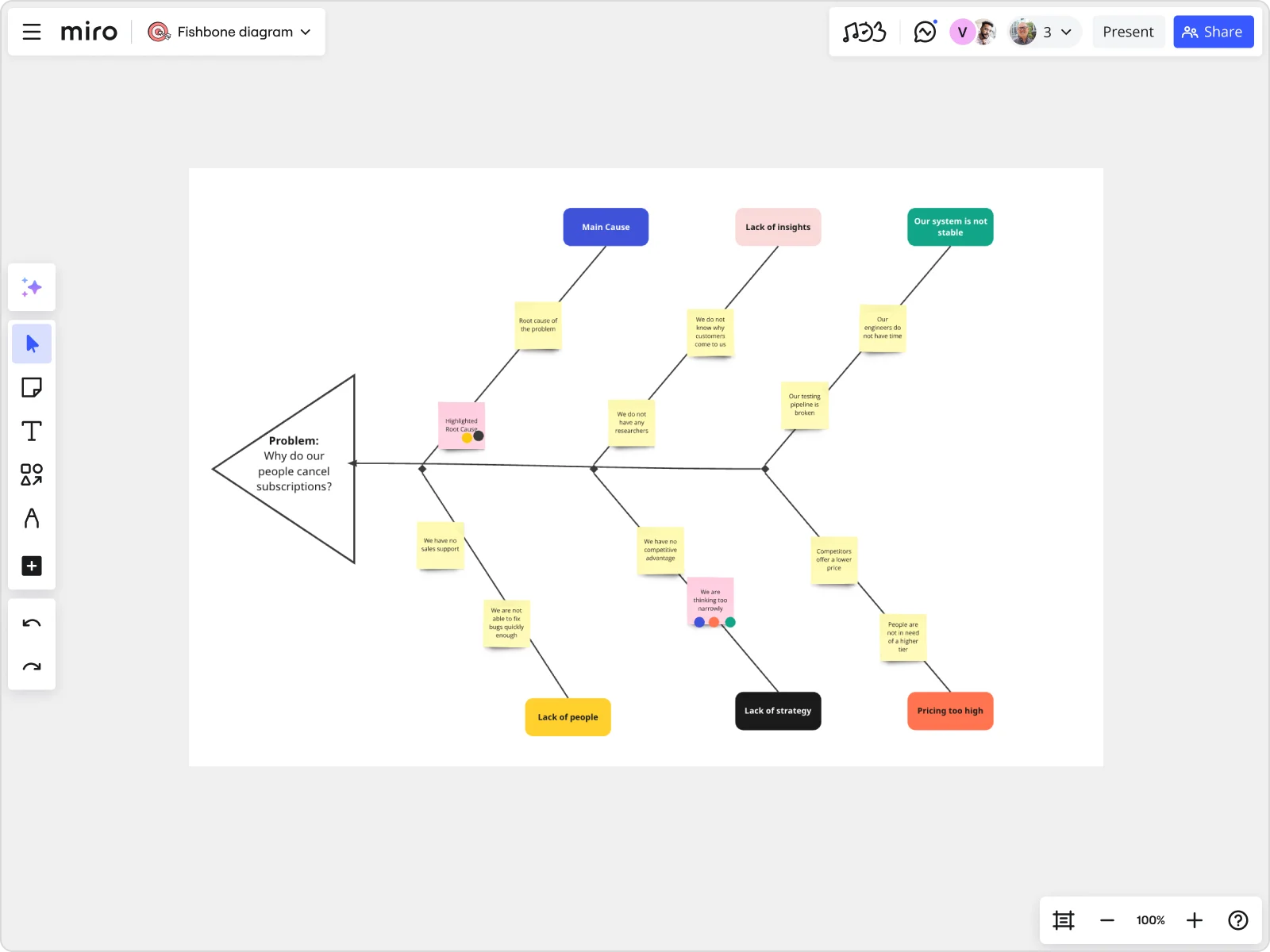Power Obeya collaboration with Miro

Speed up the decision making cycle with powerful, digital tools
Recreate the feeling of togetherness in a digital environment, boost engagement and run effective brainstorms with facilitator tools.

Ensure equal participation and visibility into results
Give teammates a shared space to collaborate, allow stakeholders to review and provide feedback, and document project resources and outcomes.

Build a centralized space for discussion & decisions
Bring insights, tasks, and business intelligence data into a single workspace to visualize the big picture and discuss ideas. Manage collaboration with powerful facilitator tools.

Powerful hybrid collaboration with Miro
Streamlined communication
Align around critical project resources and performance insights
Real-time updates
Manage stakeholders and provide visibility into progress and process
Hybrid participation
Allow everyone to contribute equally, regardless of location or device
Powerful tools
Leverage digital collaboration tools to make decisions and execute quickly
Related pages
Related templates




How to power Obeya collaboration in Miro

We have answers to your questions
Can I set up an Obeya room with remote participants?
Yes! Miro works across various devices to help you optimize collaboration, regardless of location and time zones.



